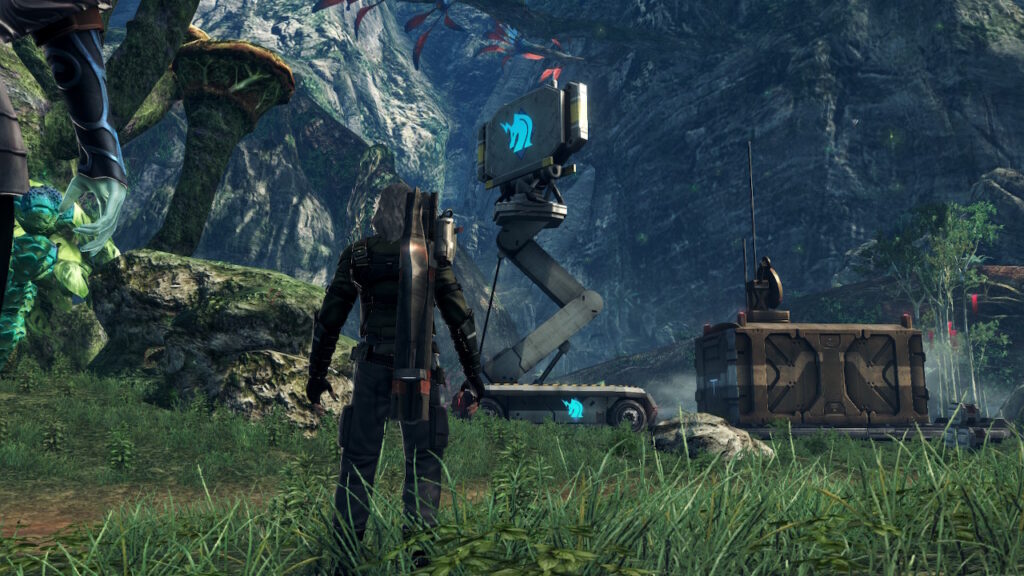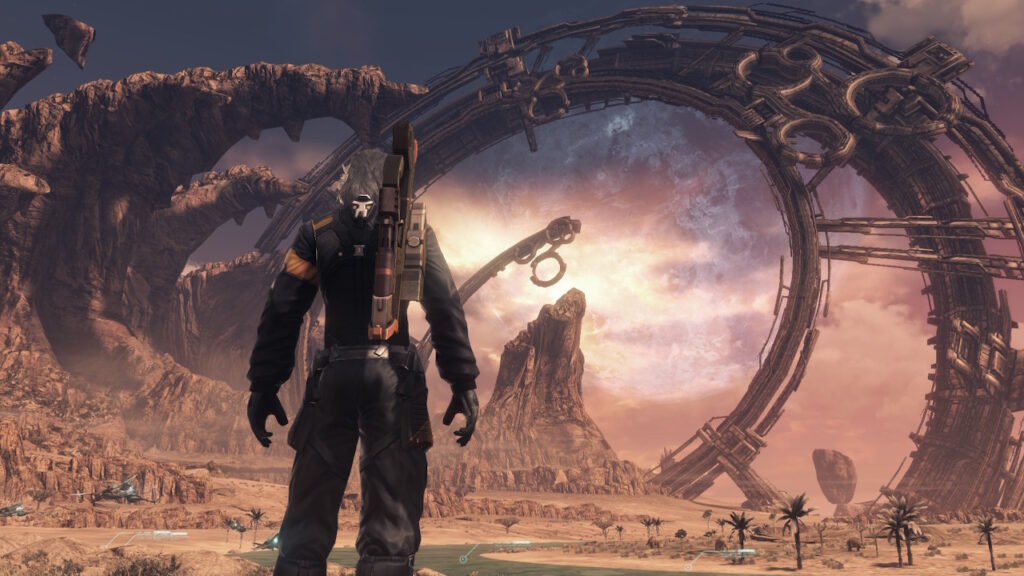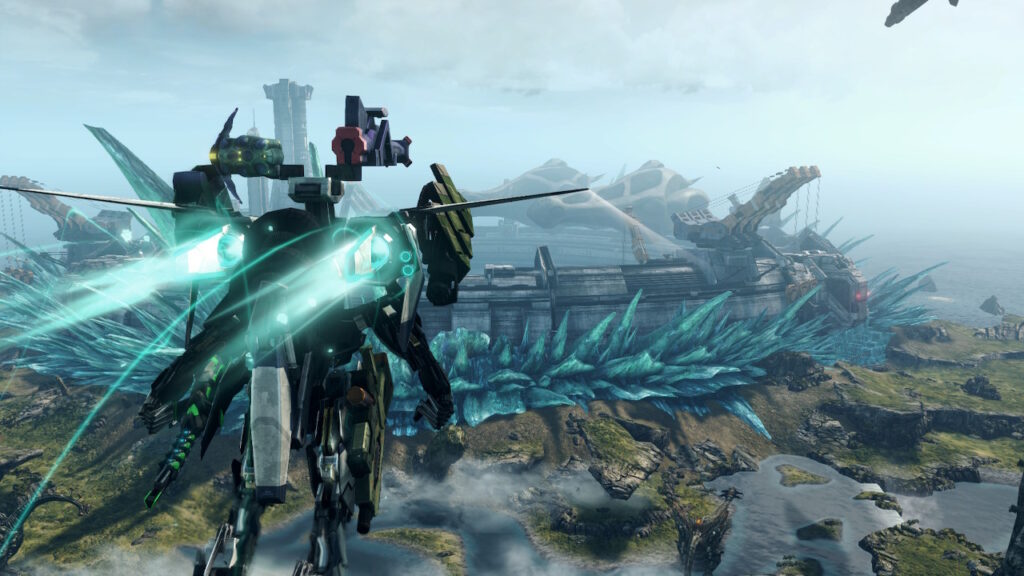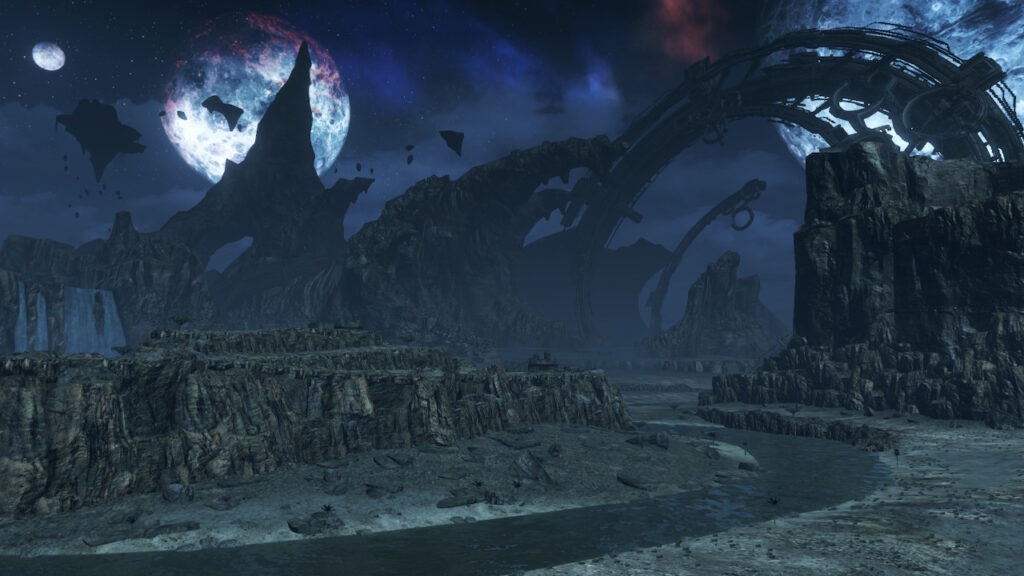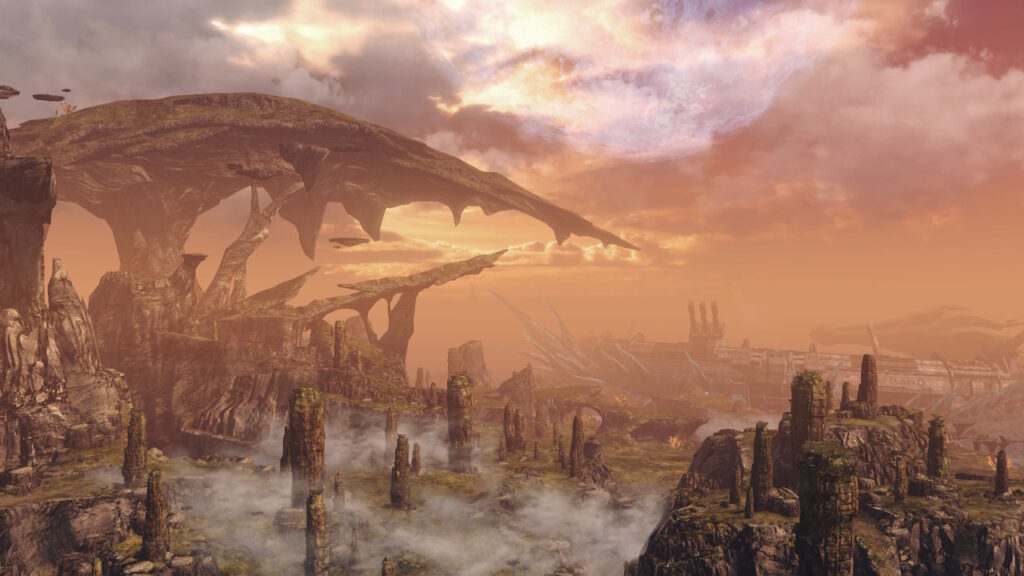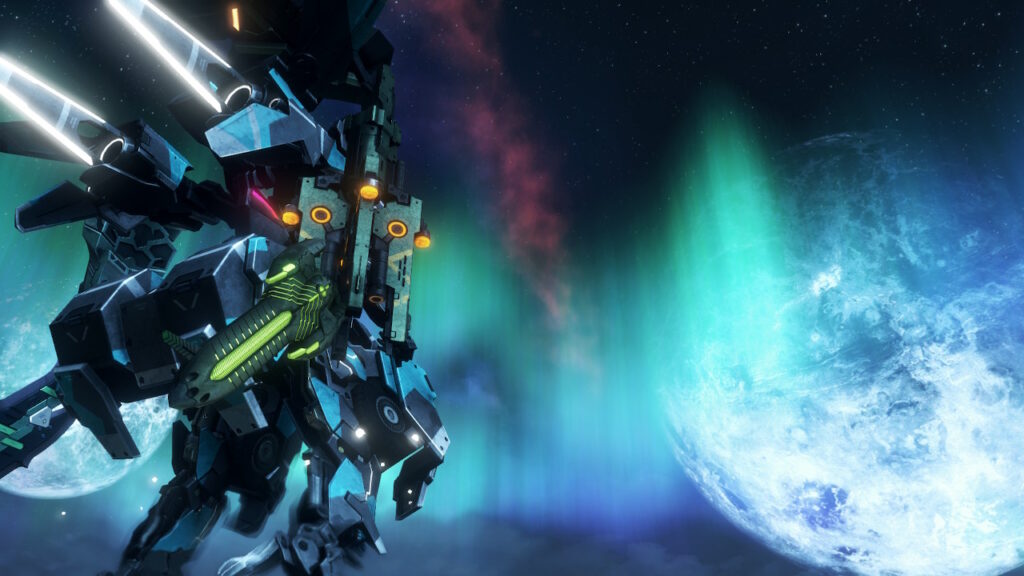A while back I wrote a post discussing the differences between Japanese and Western RPGs which I concluded by stating my firm preference for the latter. Though I have not changed my opinion, this does not mean I won’t play JRPGs and occasionally one comes along that I am interested in. For example, I played the Super Mario RPG remake that released in 2023 and Mario & Luigi: Brothership which was released late last year. Earlier this year, a remastered version of Xenoblade Chronicles X which was originally released on Wii U, was released on Nintendo Switch. Though there are now two numbered sequels to the original, Xenoblade Chronicles X was the first chronological release. I did play the Japanese Wii U version back in 2015 but had a hard time as it was all in Japanese which for such a text heavy game, certainly limited enjoyment; not being able to understand much outside the basics. I got about a third or so through the main story before giving up and moving on.
I did however remain interested in the game’s concept including the Skell mechs which are a significant part of the game as indicated on the awesome front cover. Never having got far enough in to experience one of the game’s biggest selling points, I was still interested in giving the game another go. With the announcement of a remaster, that not only allowed me to play the game in my native language but with a number of quality improvements, I was keen to revisit it.
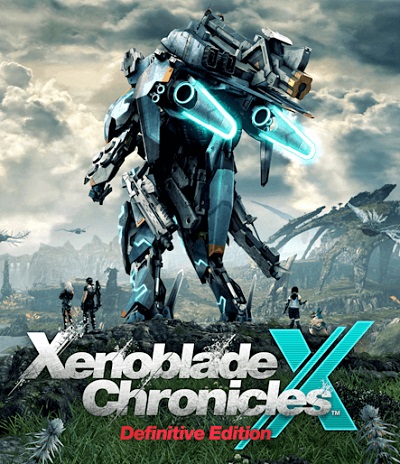
I had mixed opinions about the original Xenoblade Chronicles, which is largely why I never bothered with either of the above mentioned sequels. I did play the English version on Wii and quite enjoyed about two thirds of the game. While it did remain generally engaging, the level of grinding and padding in the design made it a slog in the last portion of the game. Now most who play games like this, don’t mind this at all but it certainly did irritate me. Xenoblade Chronicles X still has grinding as a fundamental element in its design, but the extra variety in gameplay brought particularly through Skell combat as-well as the more consciously science-fiction premise held more appeal for me.
Playing the early stages of the game some ten years later, I was surprised at how much I remembered from being lost in translation on Wii U. I quite deliberately took my time with it including taking on many side activities and just spending time exploring the world. I thought doing this might bring more enjoyment and avoid the grind as my character gained levels and equipment along the way. I also saw in a few places on the web leading up to release that it was best to get familiar with the world and not rush straight for the point in the story where you acquire your first Skell. This proved to be true in the early part of the game but there was still need for grinding later on.
A problem I had that I didn’t notice until some way into the game was how little experience is gained from completing side missions. The main advantage to doing these is in acquiring equipment and currency and not the experience points which are given more generously in story missions and by fighting tough monsters. After noticing this, I decided to avoid the frustration I had in the original Xenoblade Chronicles and looked up ideal areas to quickly push up character levels. Thankfully, there were a number of spots that made this easy and I was able to push through levels relatively fast. As with the original game, many enthusiasts get so engrossed in the combat and side content that they not only meet prerequisites for certain story missions but often find themselves well beyond where they need to be to overcome the enemies they encounter. These gamers won’t see this as an issue the way I do but it is a problem with the game’s design for those that mostly want to experience game’s narrative.
Another is the way enemies are placed in the world which to my knowledge is true of every game in the series. From the earliest areas in the game through to post-game content, it is more than likely you will encounter an enemy (or group of enemies) that is well beyond your abilities. Running away from battles runs counter to the way most people play games but it is often a necessity in Xenoblade. It is also irritating and remains so from start to finish. A mission you are completing might have a recommended level that you meet but the quest marker could be placed in an area with very powerful enemies that are difficult to avoid while completing the mission. This is true also of some story missions and the frustration caused detracted from what was otherwise a fun and engaging experience.
The progression system and equipment options can be overwhelming but this is mostly a good thing. Taking the time to experiment with attacks and load-outs can be very rewarding and I expect most players will be able to find tactics that work well in most situations. The sheer amount of equipment, battle tactics and customisation options are most rewarding for the players that spend time understanding the games deep mechanics. I am not among them but I can at least appreciate why this game and the series in general is beloved by many. Here the Skells are also genuine “game changers” as once they become a significant part of combat encounters, much previous character progression becomes much less important. The final portion of the game is almost exclusively focused on Skell combat.
The earlier mentioned advice to take your time exploring and experiencing the world proved more true as the game progressed. By the time I acquired my first Skell, I was familiar with over half the world map and was confidently traversing the various biomes. Acquiring the initial Skell made many earlier enemies trivial and though it is very weak compared to Skells acquired later, it truly felt powerful the first time I piloted it. The real joy doesn’t come until later still when acquiring the flight module that does exactly what it says. Having spent so much time exploring the world from the ground, the scale of the world can be much better appreciated from the air. This wouldn’t hit anywhere near as hard if it were possible to access this early in the game and would also take away from all that can be explored on the ground.
Once Skells become available, the in-game currency becomes a lot more important. It is important early on for equipment upgrades but the much higher expense of Skells makes it even more so. It is important that not just the player character, but all supporting characters have decent equipment and this is true of the Skells as well. In the early part of the game, I never lacked for money but in the last chapters, I never had enough.
What I have covered so far doesn’t really do justice to the gameplay as there is truly a lot to do. Side missions, affinity missions with various characters, the collectables littered all over the landscape and a number of other distractions. There is an online component which I didn’t spend a great deal of time with but I did make sure I was logged in to the server as there were bonuses available while playing single-player too. I don’t really want to focus on these elements though as they’re not major areas for criticism.
After playing to the end of the game, it is the narrative that I have the most criticism for and this is almost entirely due to the short epilogue following the end-credits of the original game. A quick overview of the plot of Xenoblade Chronicles X is that earth is destroyed in a conflict between two alien races at the beginning of the game. An ark ship called the ‘White Whale’ is able to escape and after coming under attack from aliens again, crash lands on the planet Mira. The survivors establish ‘New Los Angeles’ on the planet and begin exploring and expanding their presence. The player character’s name and appearance can be customised but is by default known as ‘Cross’. He is awakened from an escape pod by Elma, a major character who leads the player’s team and the adventure begins from here. From this point, many of the typical JRPG tropes form part of the narrative which is typically over-the-top.
Some way into the story mission, it is revealed that they are in a race against time to find the Lifehold Core, a piece of the ship that broke off and crash landed somewhere on Mira. This holds the real bodies of the survivors and it is revealed that Cross and everyone except Elma are inhabiting artificial bodies known as Mimeosomes. As I stated, the unnecessarily convoluted plot elements found in so much Japanese media are very present in the game. The final story mission ends with the players securing the Lifehold Core from the Ganglion alien race and even treachery from some human survivors. Elma reveals herself to be an alien — though a friendly one. There is then a satisfying ending showing the fledgling colony beginning to grow having escaped the major threats. Had it ended here, it would have been a satisfying ending and all the more encouraging for pursuing post-game content.
Unfortunately, the post-credits cutscene undermines this by revealing that the Lifehold Core had been damaged during the crash landing on Mira which should have meant the end of everyone. Yet somehow everyone has survived because there “is something about this planet”. The race against time to recover the Lifecore Hold loses all sense of urgency as does the very survival of the colony. This is where the story ended in 2015 which left the game open for a sequel that was never to be. The ‘Definitive Edition’ adds a final story chapter that was to address this awkward cliff-hanger.
The extra content somehow manages to make everything worse from the opening. Unlike many, I was not waiting ten years for this but I was still left very dissatisfied with what had been produced after a decade for the developers to think it through properly. All the work that had been done to establish the colony was for nought because everyone now has to escape to a new dimension because an alien god called ‘Void’ is going to destroy Mira. As with the original Xenoblade Chronicles and far too many JRPGS, the player now has to defeat a god by using the power of friendship. Yes, I am certainly simplifying this but it is necessary to both save words and avoid confusing the reader more than necessary.
To say this is all dissatisfying then would be an understatement. Everything the player did during the game in establishing the colony on Mira was virtually meaningless with regard to the narrative. You could point out that all you did prepared everyone for the ultimate outcome but it still feels hollow in the end. A much less convoluted ending where the bad guys were defeated and a new civilisation was built on Mira would have been much, much more satisfying. It would have also made for an interesting sequel where explorers from Mira could then establish a new colony on another planet in the future. Instead, an interesting premise fell into all too typical JRPG tropes.
As with the gameplay, I have not gone into anywhere near the depth I could have but the ending to the game really does hurt the overall experience. It was a big let-down on time spent and gave little motivation to continue playing beyond the game’s ending. Despite this, it is still a great game if you can overlook its disappointing conclusion and many of the irritating aspects of the gameplay. The visuals and soundtrack are amazing and this is especially true of the ‘Definitive Edition’, where there is a significant visual upgrade and even a number of new music tracks; including new versions of existing ones. When you finally pilot a Skell over this beautiful world with one of the best tracks on the soundtrack playing, the game is truly at its best. It is just quite an investment to get to many of its best points.

